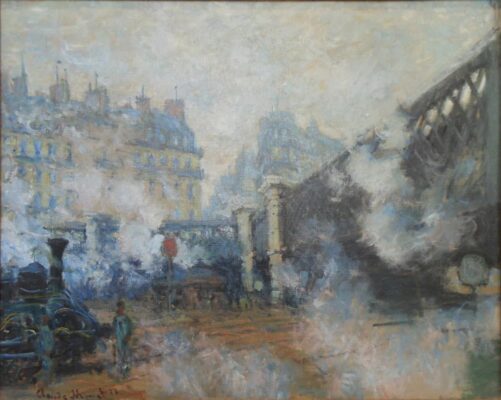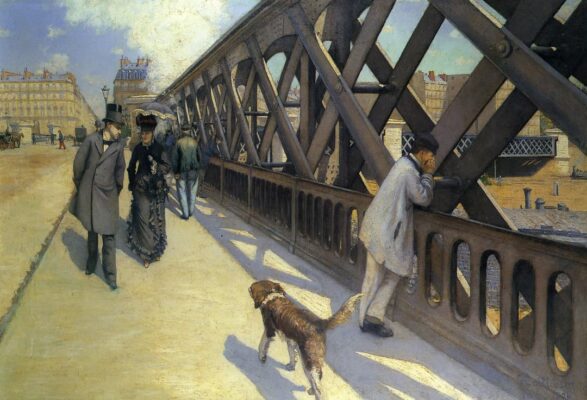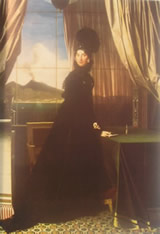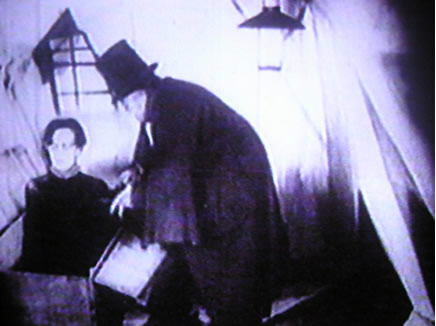Impressionist Urban landscapes in Paris, 1860-1900
by G. Fernández – theartwolf.com
During the second half of the 19th century, the city of Paris undertook a group of reforms affecting its interior morphology, with the aim of transforming the French capital into the most modern and powerful European metropolis. Napoleon III appointed Georges-Eugène Haussmann as the responsible of this ambitious project -later known as “Haussmann’s Paris”-, a project considered, together with Idelfonso Cerdá’s Barcelona, as the best example of the European urbanism from the 19th century, criticised by functionalists like Van Eesteren, who called it “cardboard urbanism”. During this modernizing boost, Paris was also the favourite pictorial motif of the most modern and powerful pictorial trend of that era, the Impressionism. From Manet to Caillebotte, from Renoir to Pissarro, and even a “not so impressionist” painter like van Gogh, the new Paris was chosen as a model for modern paintings.
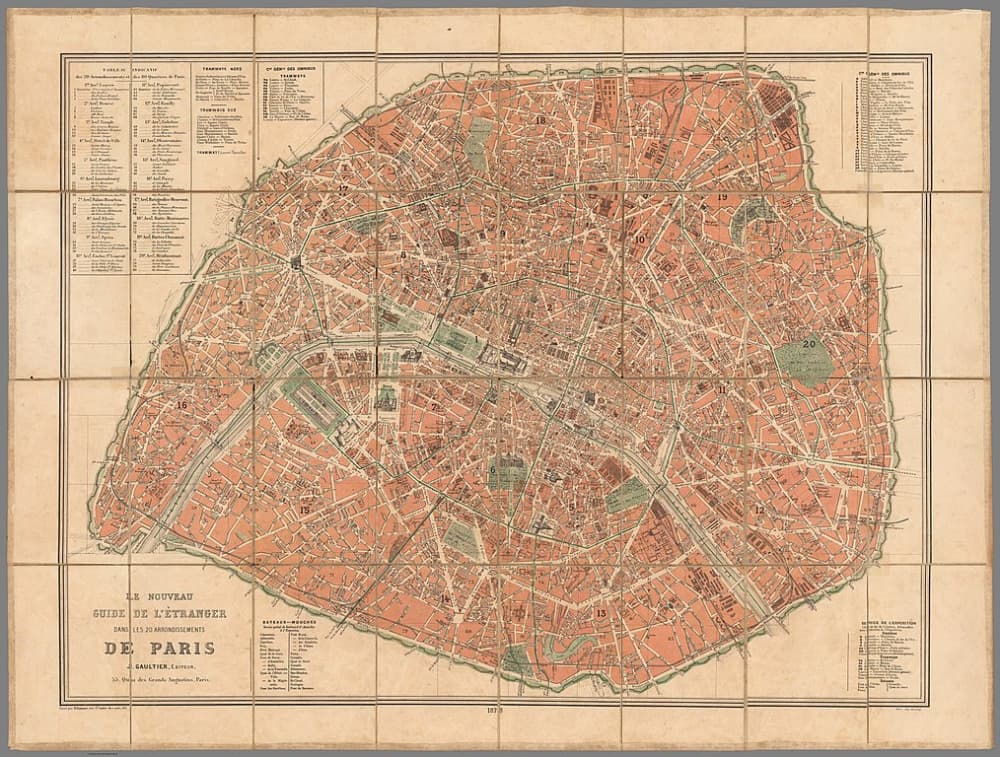
Paris map from 1878 (author: Gaultier) showing Paris ‘ morphology and Haussmann’s interventions.
The main point in Haussmann’s project was the redesign of the road system, and the obvious demonstration of it is the boulevards. Far from the glamorous and bourgeois significance of today, Haussmann projected these majestic roads with an evident military objective.
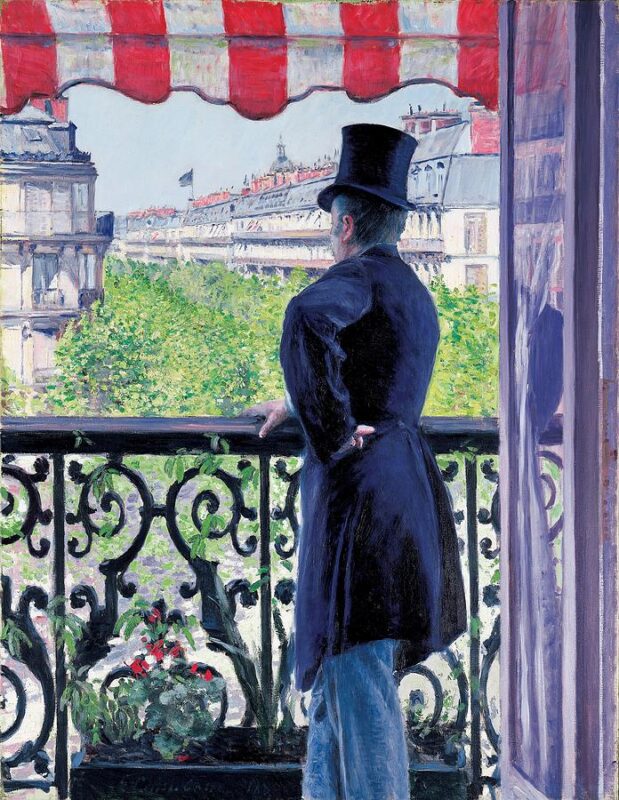
Gustave Caillebotte: “L’homme au balcon, Boulevard Haussmann” (1880, private collection). Although he is not as famous as some of is contemporaries -Monet, Renoir- Caillebotte is possibly the painter who best depicted the Paris of the late 19th century and its majestic boulevards. Caillebotte plays with the perspective and focus the viewer’s sight on the” grandeur” of the great boulevard.
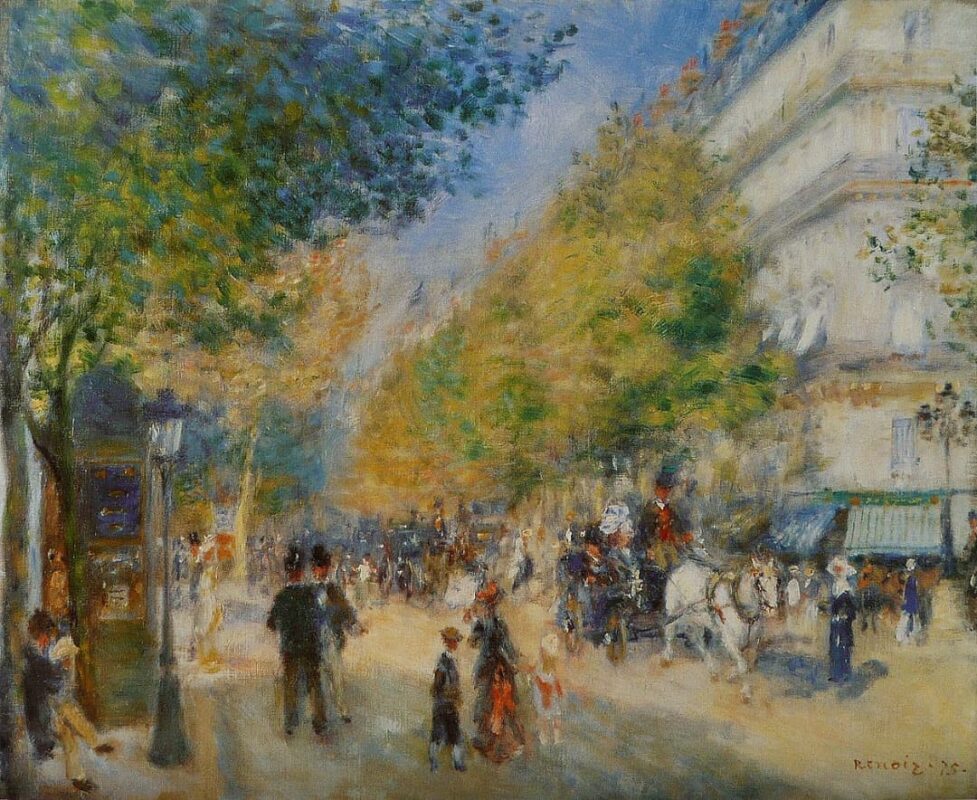
Pierre-Auguste Renoir: Les grands boulevards (1875, © Philadephia Art Museum), a full vision of Haussmann’s Paris by a painter who rarely used it as a subject for his works. Renoir adopts the point of view of a Parisian passer-by, allowing us to contemplate the buildings, the tree-lined street and the street furniture, showing in the left corner a streetlamp, an urinary and a bench in which a carefree man is reading a newspaper.
An important point of Haussmann’s project was the transformation of the rail stations, considering them as a pivotal part of the city. The rail stations of the 19th century Paris were considered as “symbols of modernity”, one of the favourite subjects for many of the impressionist painters.
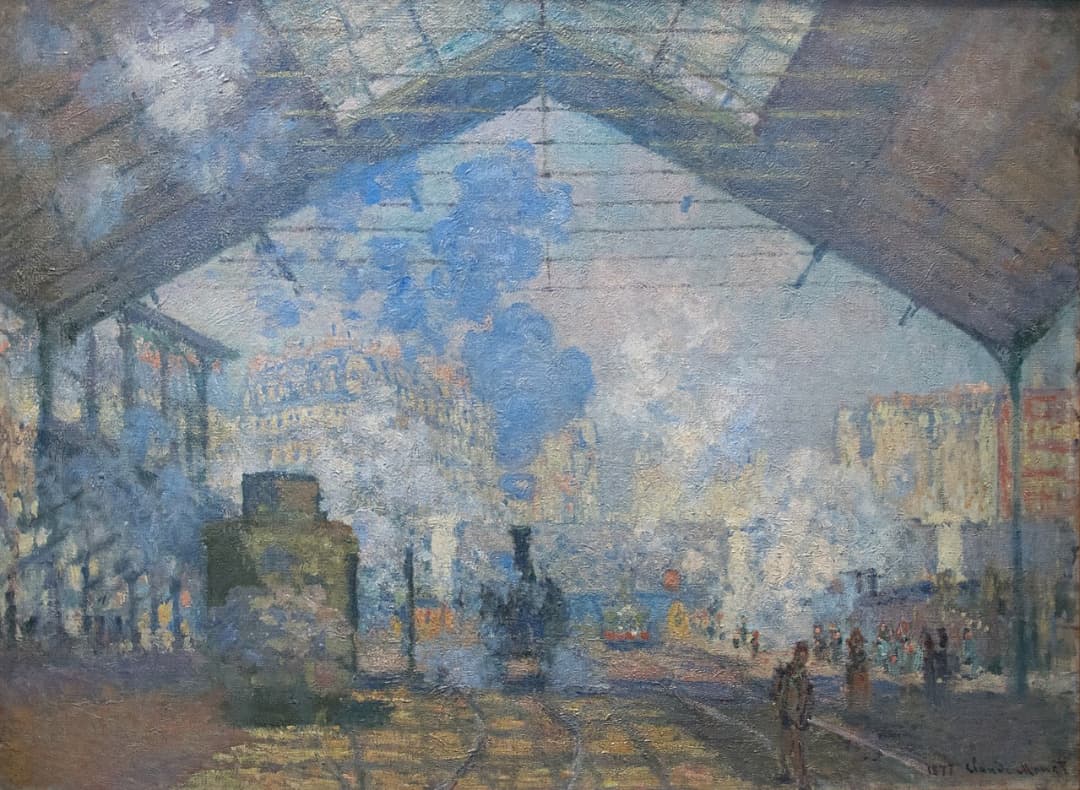
Claude Monet: La Gare de Saint-Lazare (1877, Paris, Orsay), an impressionistic masterpiece described during the Third Impressionist Exhibition by the magazine “L’homme libre” as: “a true wonder. Monet’s paintbrush has represented not only the movement, the colour and the activity, but also the rejoicing. It’s unforgettable. The station, of course, is full of noise -screeches, whistles- audible through the confusion of the clouds of grey and blue smoke. It’s a pictorial symphony”
So the rail stations were also an important part of the impressionist iconography. And among all of them, the Saint Lazare Station (Gare de Saint-Lazare) reunited all the characteristic elements of the modern Paris : an active and busy station, surrounded by majestic boulevards and maisons , with the ultra-modern Pont de L’Europe, a new paradigm of the steel Architecture. Symbol of the industrial and republican future, a microcosms of steel and iron, the station was a recurrent subject for some of the best painters of the age.
Gustave Caillebotte: Le Pont de L’Europe, 1876 (Musée du Petit-Palais, Geneve) and Claude Monet: Le Pont de L’Europe in the Gare Saint-Lazare, 1877 (Paris, Musée Marmottan), two different versions of the same place. While Caillebotte emphasises the austerity and purity of the steel architecture, Monet qualifies it, shading it among the station’s smoke.
Haussmann anticipated the functionalist theories that emphasize the importance of the great crossroads as agglutinative points for road traffic, and pivotal points in the new urban order.
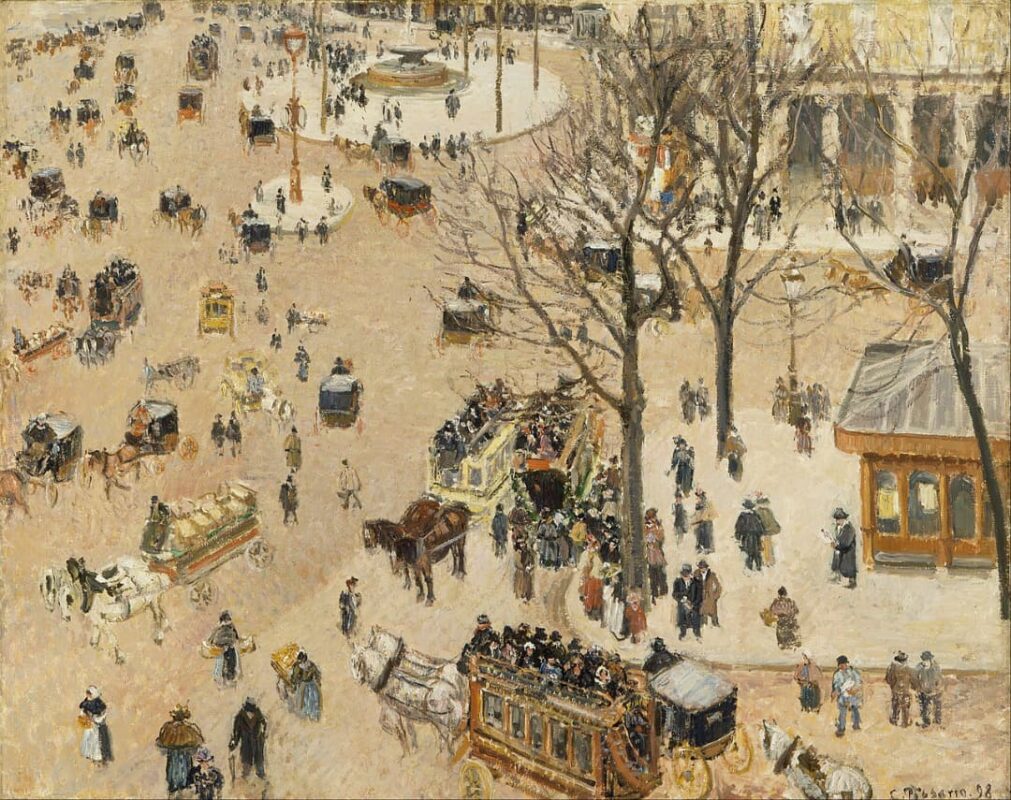
Camille Pissarro: La Place du Théâtre Français (1898, © Los Angeles County Museum of Art) or the not always successful attempt of putting some order in the circulatory chaos. Pissarro repeated this unusual perspective in many paintings of his last years.
Housing projects in the Haussmann’s Paris were based on the “Maison de Raport”, giving Paris an unitary appearance. The façade ordinances had a pivotal importance in this age.
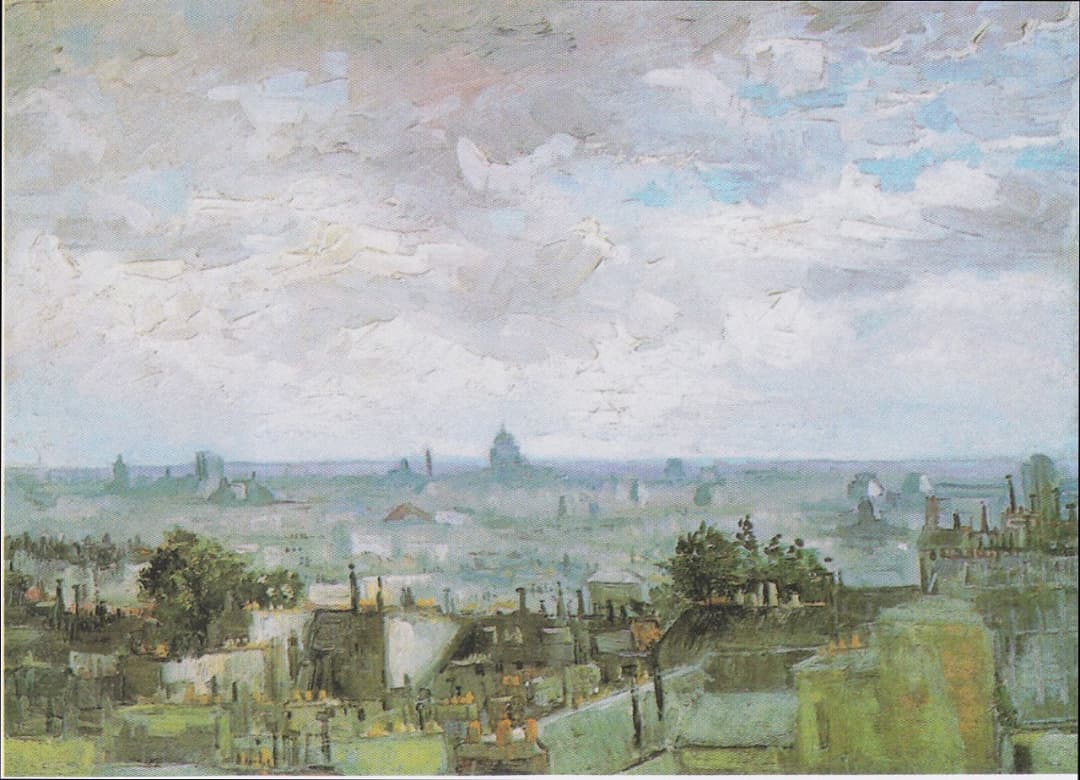
Vincent van Gogh: View of Paris from Meudon (1886, Amsterdam, van Gogh Museum) perhaps the most impressionist of all van Gogh’s paintings. Part of this uniformity in the height of the buildings has been lost, in part for the apparition of new edificatory areas ( La Defense ) and new interventions as the Montparnasse Tower.
The green areas also suffered significant modifications, being divided by lineal elements (tree-lined streets and boulevards) and urban parks (exterior, interior and squares). This intervention was very imitated in other European cities.
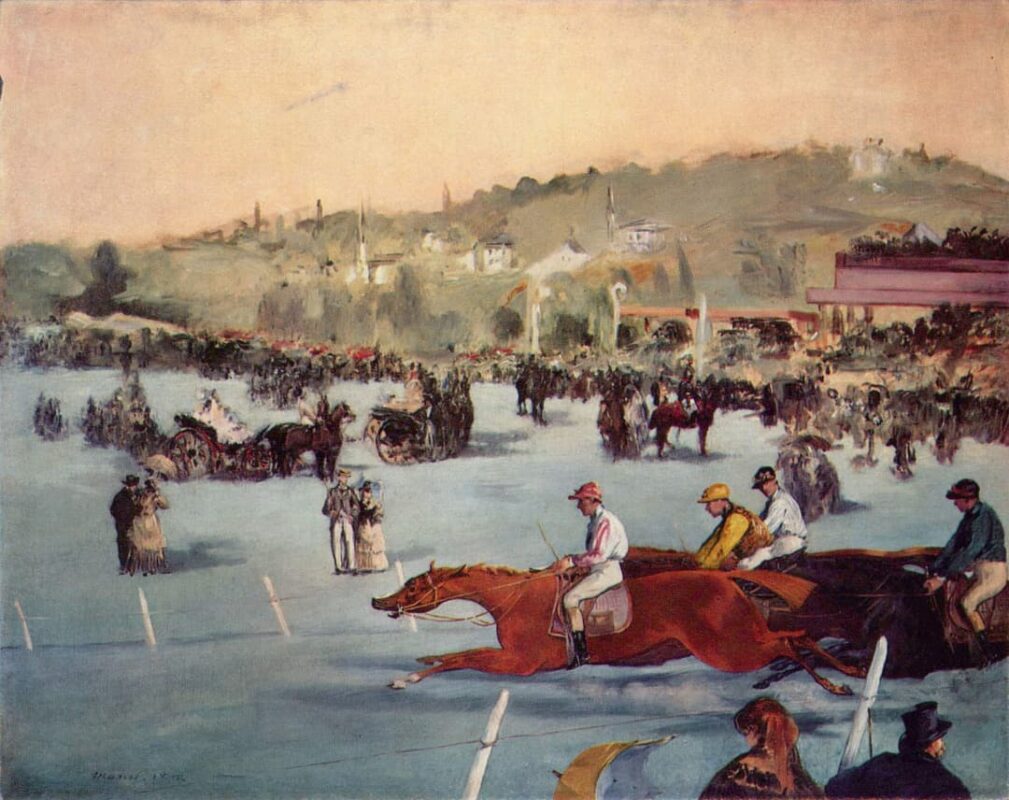
Edouard Manet: Races at the Bois de Boulogne (1862, private collection), a vigorous and dynamic depiction of the most important Parisian green area, destined to be the leisure area for the citizens of the great metropolis.
The street furniture is unique in Paris , as it is conceived as a fundamental element in the urban project, with a pivotal importance in the urban landscape. Newsstands, benchs, urinaries… A very important element are the streetlamps, being Paris the first European city with public lighting.
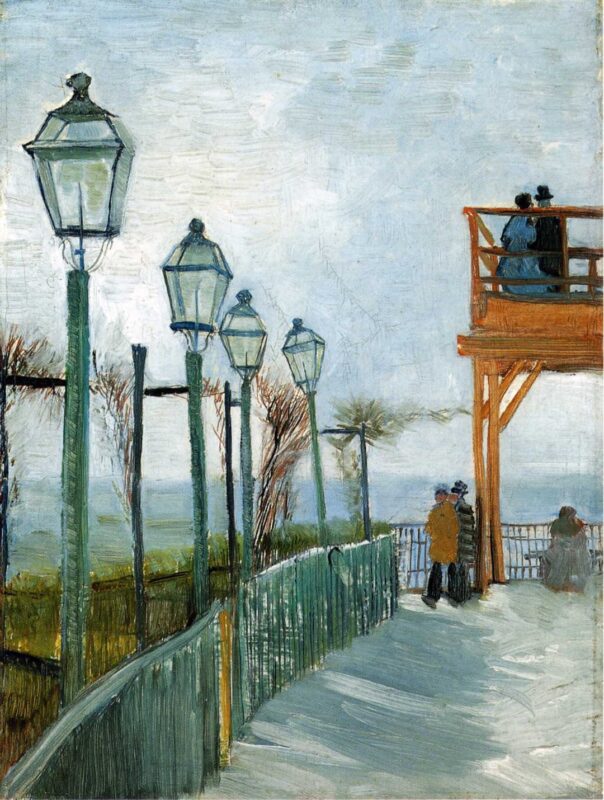
Vincent van Gogh: Montmartre, 1886 (© Chicago, the Art Institute of Chicago ), or how the streetlamps can be considered as a constitutive element of the urban landscape (and of the painting
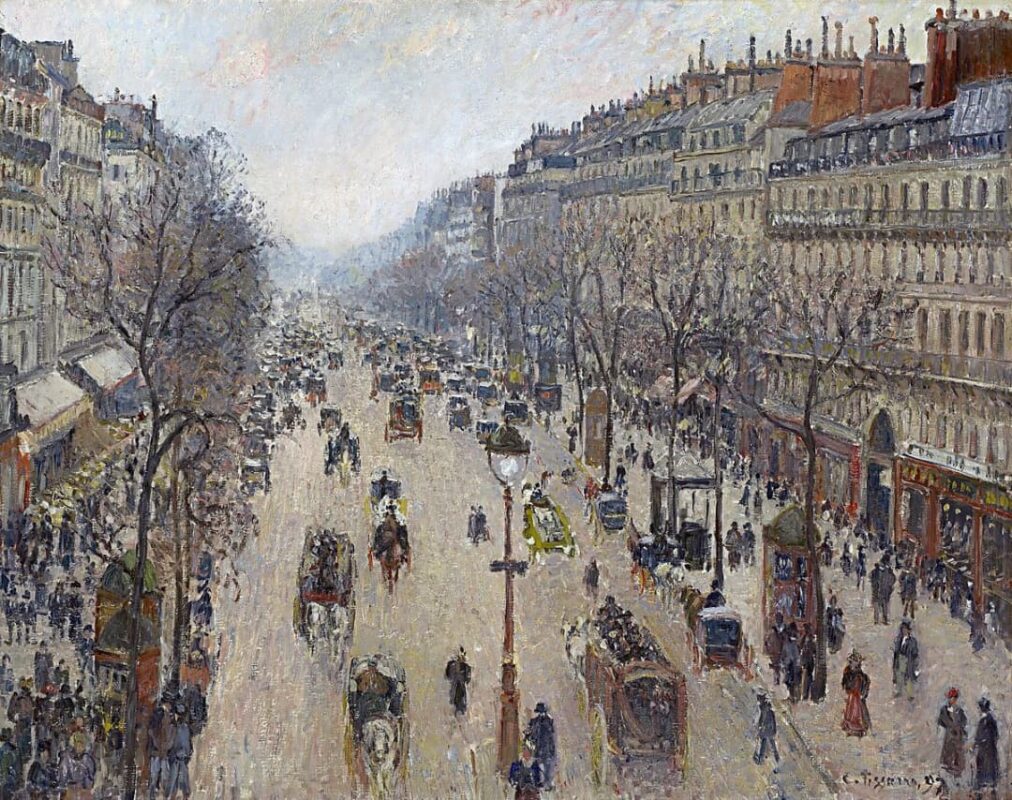
Camille Pissarro: Boulevard de Montmartre (1897, Melbourne , Victoria Gallery of Art) or the pictorial testimony of the “grandeur” of Haussmann’s urban project: public lighting at many levels, newsstands and benches, aligned on the monumental Boulevard de Montmartre. The unusual point of view, organised by the confluent lines of the roads and the trees, gives the viewer an immediate comprehension of the urban landscape.
Follow us on:

